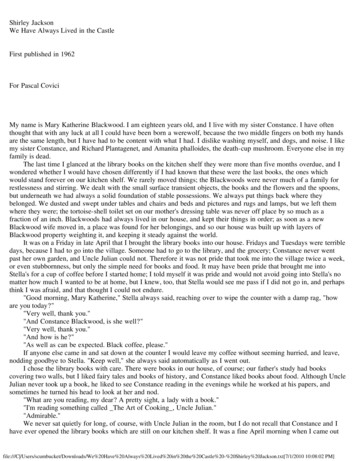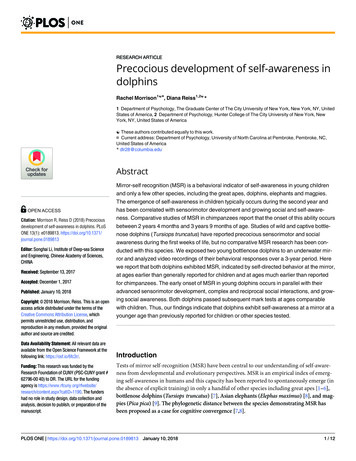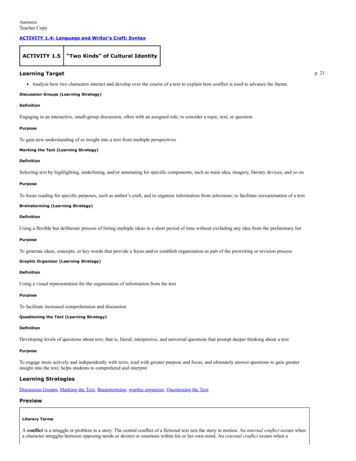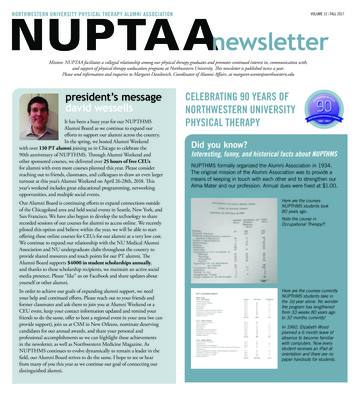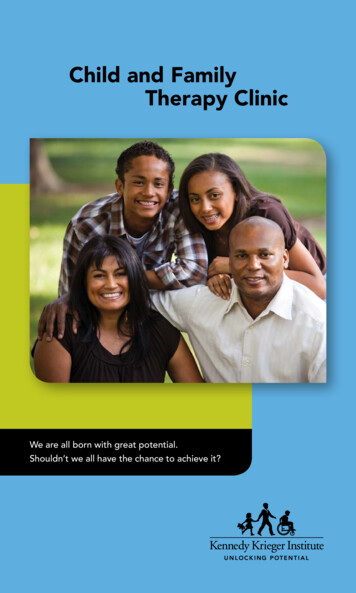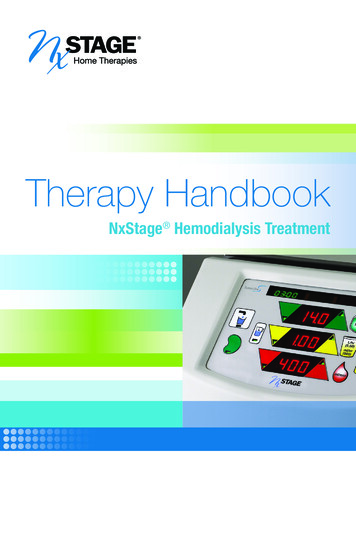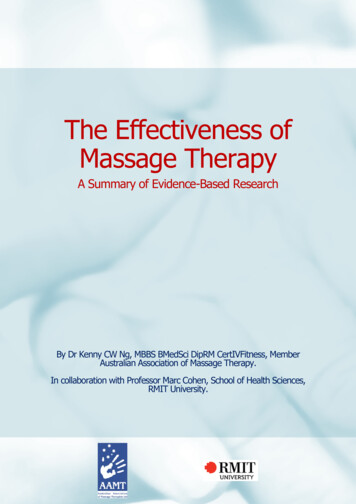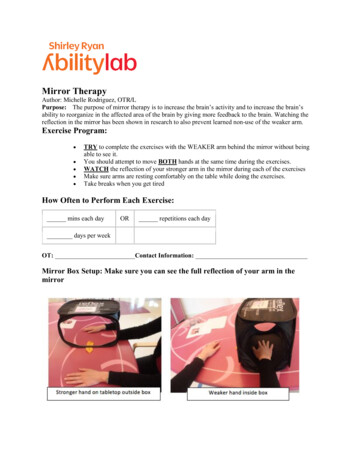
Transcription
Mirror TherapyAuthor: Michelle Rodriguez, OTR/LPurpose: The purpose of mirror therapy is to increase the brain’s activity and to increase the brain’sability to reorganize in the affected area of the brain by giving more feedback to the brain. Watching thereflection in the mirror has been shown in research to also prevent learned non-use of the weaker arm.Exercise Program: TRY to complete the exercises with the WEAKER arm behind the mirror without beingable to see it.You should attempt to move BOTH hands at the same time during the exercises.WATCH the reflection of your stronger arm in the mirror during each of the exercisesMake sure arms are resting comfortably on the table while doing the exercises.Take breaks when you get tiredHow Often to Perform Each Exercise:mins each dayORrepetitions each daydays per weekOT: Contact Information:Mirror Box Setup: Make sure you can see the full reflection of your arm in themirror
Exercises:1. Finger up/down: Tap your index finger up and down2. Wrist up and down Slowly lift your hand off the table and then slowly back to the table
3. Finger stretch and close: Stretch your finger out wide so they are not touching each other. Thenpull fingers back together tight. Keep your hand down on the tabletop.4. Palm up and down: Turn your arm so your palm facing up and then down to the table
5. Fist open and closed: Tighten your hand into a ball and then stretch your fingers out wide6. Thumb Extension “thumbs up”: Lift up your thumb into a “hitchhiker’s” position and then pushyour thumb into your finger like you are turning a key
Getting a Mirror Box:1. You can make your own from a box that you connect a mirror to one side.2. You can buy a mirror box: ox/dp/B005IFDFA4References: Arya KN, Pandian S. Effect of task-based mirror therapy on motor recovery of the upperextremity in chronic stroke patients: a pilot study. Topics in Stroke Rehabilitation2013;20(3):210-17 [PUBMED: 23841968]Dohle, C., Pullen, J., Nakaten, A., Kust, J., Rietz, C., & Karbe, H. (2009). Mirror therapypromotes recovery from severe hemiparesis: A randomized controlled trial.Neurorehabilitation and Neural Repair, 23, 209-217.Invernizzi M., Negrini S., Carda S., Lanzotti L., Cisari C., Baricich A. (2013) The valueof adding mirror therapy for upper limb motor recovery of subacute stroke patients: arandomized control trial. European Journal of Physical and Rehabilitation Medicine,49(3); 311-317.Lee, M.M., Cho, H., & Song, C.H. (2012). The mirror therapy program enhances upperlimb motor recovery and motor function in acute stroke patients. Stroke, 6, 689-700Nilsen DM., DiRusso T. (2014) Using mirror therapy in the home environment: a casereport. The American Journal of Occupational Therapy 68(3); 84-89.Thieme, J., Mehrholz, J., Pohl, M., Behrens, J., Dohle, C. (2012). [Review] Mirrortherapy for improving motor function after stroke: Cochrane Review. 1-54Thieme H., Bayn M., Wurg M., Sange C., Pohl M., Behrens J.(2013) Mirror therapy forpatients with severe arm paresis after stroke – a randomized controlled trial. 27(4) 314324.Rothgangel AS, Braun SM, Beurskens AJ, Seitz RJ, Wade DT. The clinical aspects ofmirror therapy in rehabilitation: a systematic review of the literature. InternationalJournal of Rehabilitation Research 2011;34:1-13 [PUBMED: 21326041]Yavuzer, G., Selles, R., Sezer, N., Sutbeyaz, S., Busmann, J., & Stam, H. (2008). Mirrortherapy improves hand function in subacute stroke: A randomized controlled trial.Archives of Physical Medicine and Rehabilitation, 89, 393-398.Yun G., Chun M., Park J., Kim B. (2011) The synergic effect of mirror therapy andneuromuscular electrical stimulation for hand function in stroke patients. Annals ofRehabilitation Medicine 35;316-321.This content is for informational purposes only. It does not replace the advice of a physician orother health care professional. Reliance on this site's content is solely at your own risk. ShirleyRyan AbilityLab disclaims any liability for injury or damages resulting from the use of any sitecontent. 2017 Shirley Ryan AbilityLab (formerly Rehabilitation Institute of Chicago)
Henry B. Betts LIFE Center – (312) 238-5433 – https://www.sralab.org/lifecenter
therapy improves hand function in subacute stroke: A randomized controlled trial. Archives of Physical Medicine and Rehabilitation, 89, 393-398. Yun G., Chun M., Park J., Kim B. (2011) The synergic effect of mirror therapy and neuromuscular electrical stimulation for hand function in strok
